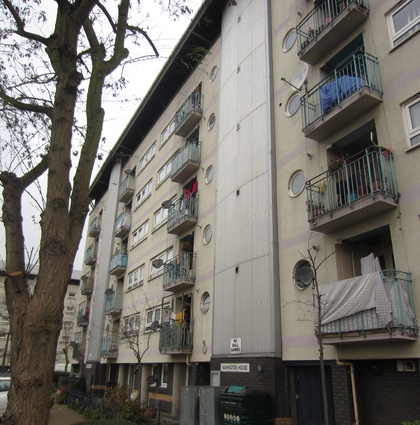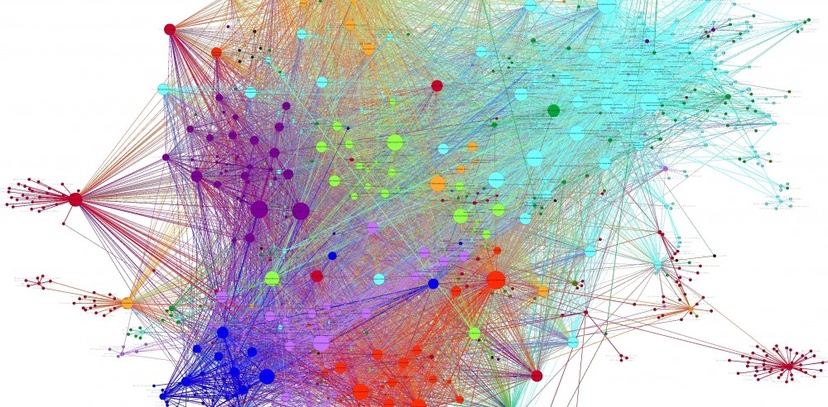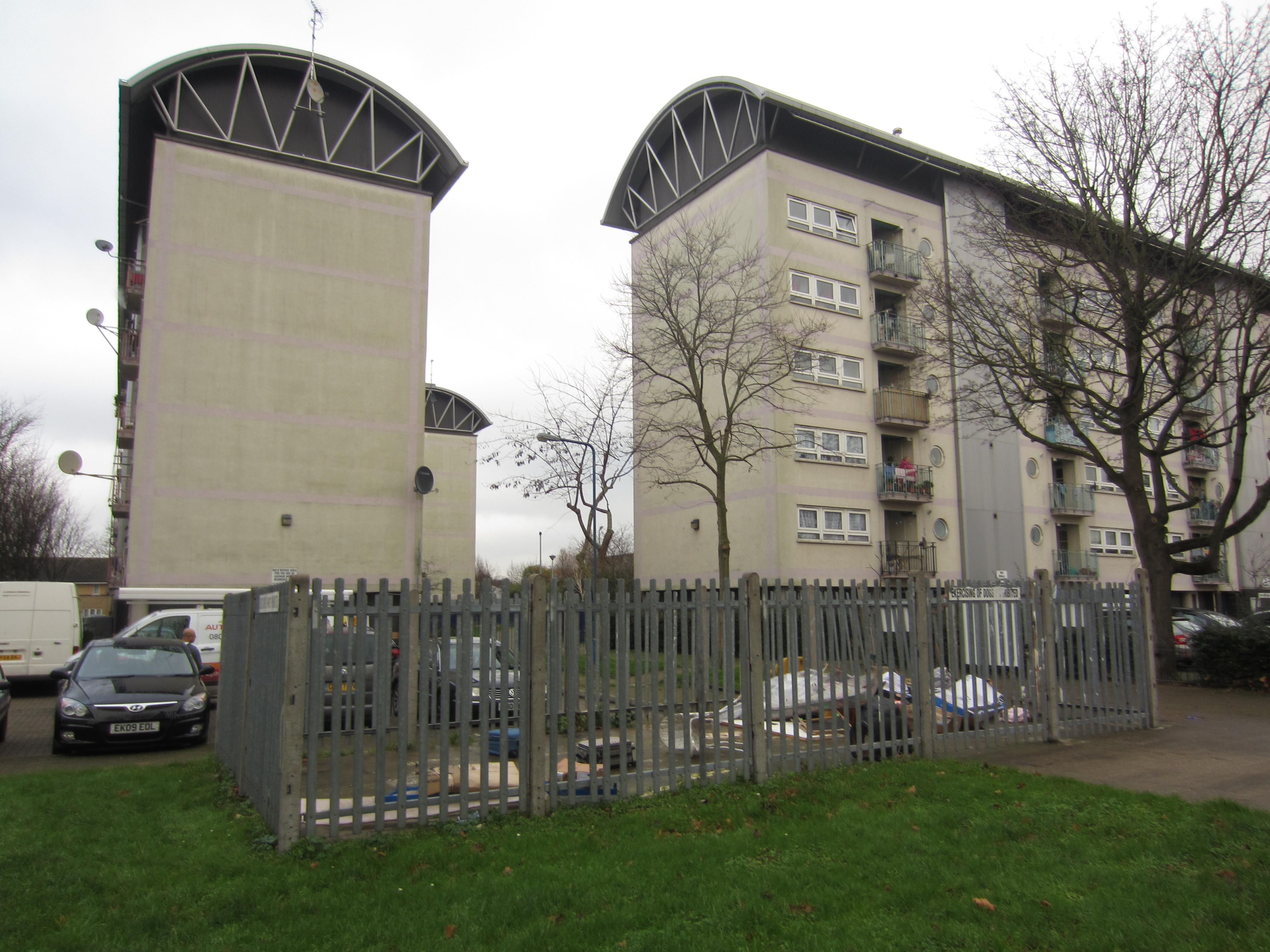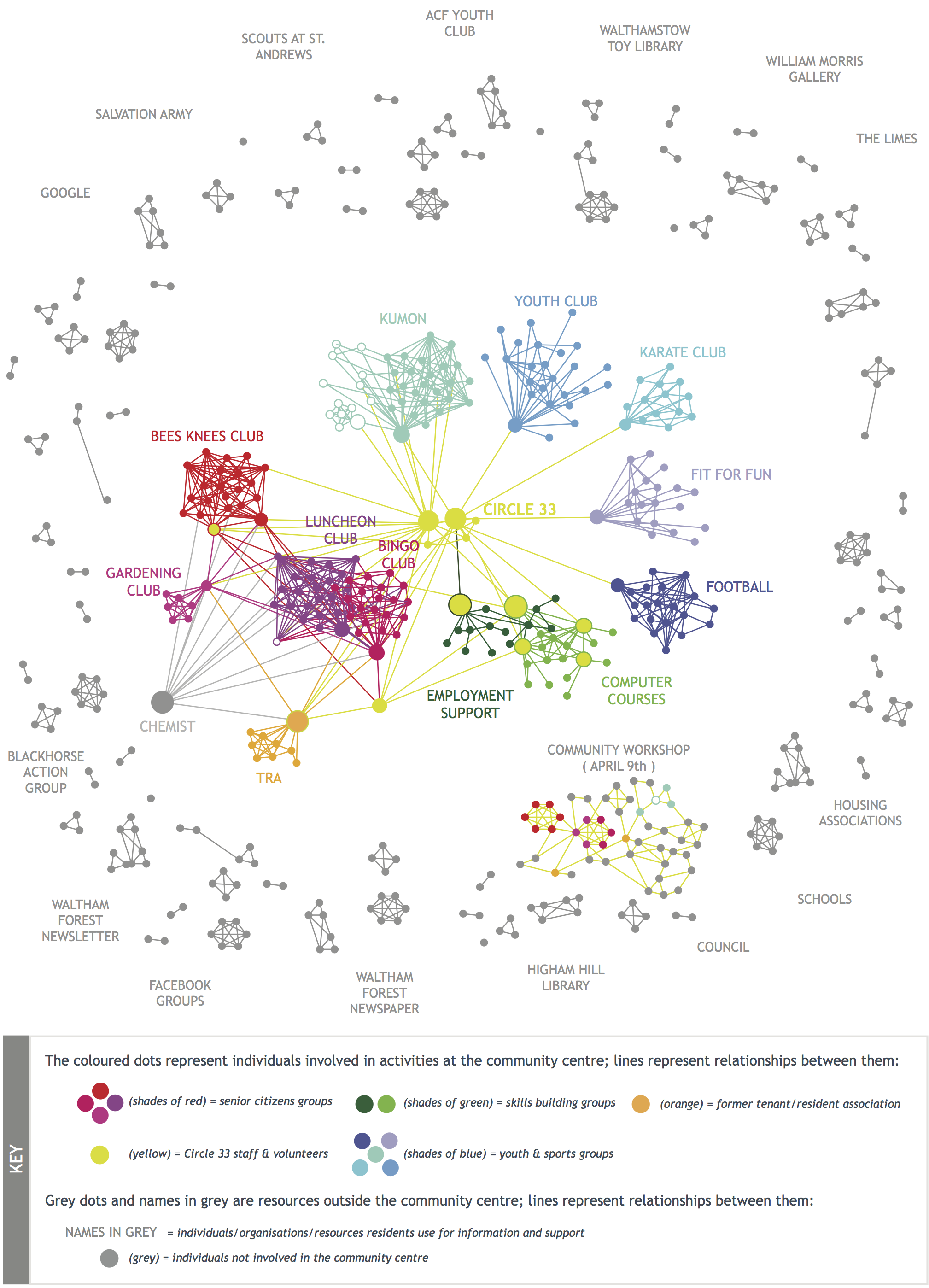

“The well connected are more likely to be hired, housed, healthy and happy.”
- Michael Woolcock, Lead Social Development Specialist in the World Bank's Development Research Group
There is widespread understanding of the physical and environmental challenges involved in creating new settlements, yet social sustainability cannot be prescribed in the same way…it requires planners, local agencies and developers to consider and respond to local needs and circumstances.[1]” Social Life’s work looks at the long-term success of places through a social lens, trying to understand what makes a socially successful community and how new research methods and tools can provide guidance for actors working in the built environment.
As part of our People Shaping Places project for Waltham Forest Council, with Kaizen Partnership, Social Life tested a technique – social network analysis (SNA) – that originally emerged out of modern sociology but that has been used across numerous disciplines to visualise the social interactions and connections between people, groups, and organisations living and working in a particular area. We carried out this work on the Priory Court Estate, an isolated area of social housing in the west of the Waltham Forest that was originally built in the 1940s and refurbished in the late 1990s.

The social network analysis of Priory Court revealed that the majority of residents in the area are only connected to their close circles of family and friends, who either live with them or live outside of the area. Only 15% of survey participants said they speak to other residents to learn about what is happening in the area. The majority of respondents also did not know of any local organisations that offer services in the area.
The Priory Court Community Centre - which is only used by approximately half of those people interviewed - is the only space that brings people together regularly in the area. People who used the centre noted local connections through the different activity groups. The community centre is therefore the only social ‘hub’ in Priory Court and it was also identified by some residents as an underused resource. Some residents commented that they did not know it even existed while others felt it was not welcoming to the diversity of residents in the area.

More analysis about these findings for Priory Court can be found here.
We collected data for the social network analysis for the Priory Court area in three main ways: interviews with local organisations and traders, a resident survey, and a SNA worksheet that we created to engage residents in a more playful way.
As part of the larger resident survey, we asked residents to provide the names of the people they go to for information about things happening in the local area. People either did not have these connections (many simply responded “Google”) and/or were reticent to provide names of individuals beyond themselves. Understandably, people wanted to know why we needed this kind of personal information? In this particular area, people were very hesitant to share this sort of information with strangers.
With this in mind, we developed a worksheet that we hoped addressed the residents’ concerns over privacy and went back out to talk with people. We found the research methodology developed by RSA for the ‘Cranford Stronger Together’ programme for Hounslow Council as helpful guidance in rethinking our own approach to the social network analysis and in creating new materials for engagement.
Our new worksheet included five simple questions like who do you go to for information, who do you socialise with, and who do you go to for help. Rather than asking for specific names, we were interested to learn the types of relationships (e.g. family, friend, neighbour, organisation) and if these were local connections or not. We also collected demographic information and asked if they were users of the local community centre to see if certain groups of people had stronger local social ties than others.
Fortunately, residents were willing to participate using this worksheet since their names and their contacts remained anonymous. In this case, what we did not find was just as important as what we did find: namely, that there were few highly-connected people in Priory Court, and most of these individuals were heavily involved with the community centre. We also found that there are more informal networks on the estate which are not capture in our social network analysis. Finding these through additional conversations as well as outreach in other languages will be key next steps for the council.
Social Life found the SNA tool useful in identifying the overall dynamic in Priory Court, and its results helped emphasise how the council, local organisations and neighbours can collaborate to support each other to become better engaged. It also highlighted the need for the community centre to enhance its services and offer more diverse activities that could bring a much broader set of residents into meaningful contact with each other.
In general, visualising the networks in a community can help pinpoint assets, where connections exist, where there are none, and show where targeted behaviour change and interventions can be most effective. By seeing how networks of people are inter-connected, we can better locate new opportunities for collaboration to strengthen and deepen our connections to our local communities.
Carrying out a social network analysis not only gives insight into how to boost “bridging social capital” – building social networks between groups of different ages, ethnicities, religions, and social class – but has also been found useful in tackling high crime and anti-social behaviour. “Strong local networks give people many benefits: from a sense of belonging and attachment to a neighbourhood, to local news and information, informal childcare, neighbours swapping keys, to recommendations about local jobs.[2]”
As society continues to grow more urban and people’s lifestyles become more transient, learning knew ways to build happier, healthier and more inclusive communities is key…and undertaking a social network analysis is just one tool that can help in the process.
The final output of this project was a toolkit - engage-wf.net - to help officers and councilors in Waltham Forest become more confident in engaging residents.
Sources:
[1] [2] Woodcraft, Bacon, Caistor-Arendar and Hackett (2011), Design for Social Sustainability
Photo credits:
[1] http://www.pacificrisa.org/projects/social-network-analysis/
[2] Social Life
